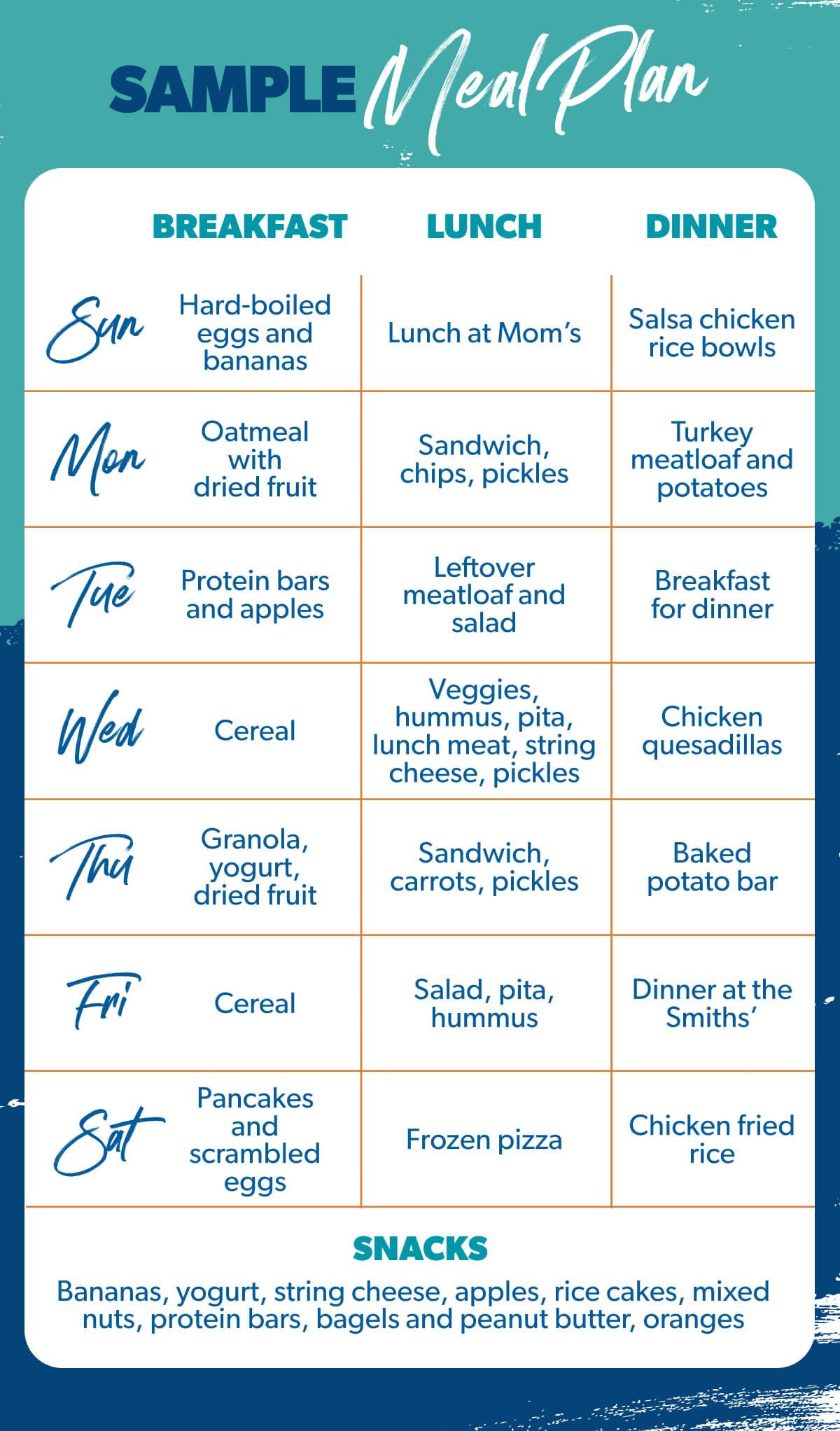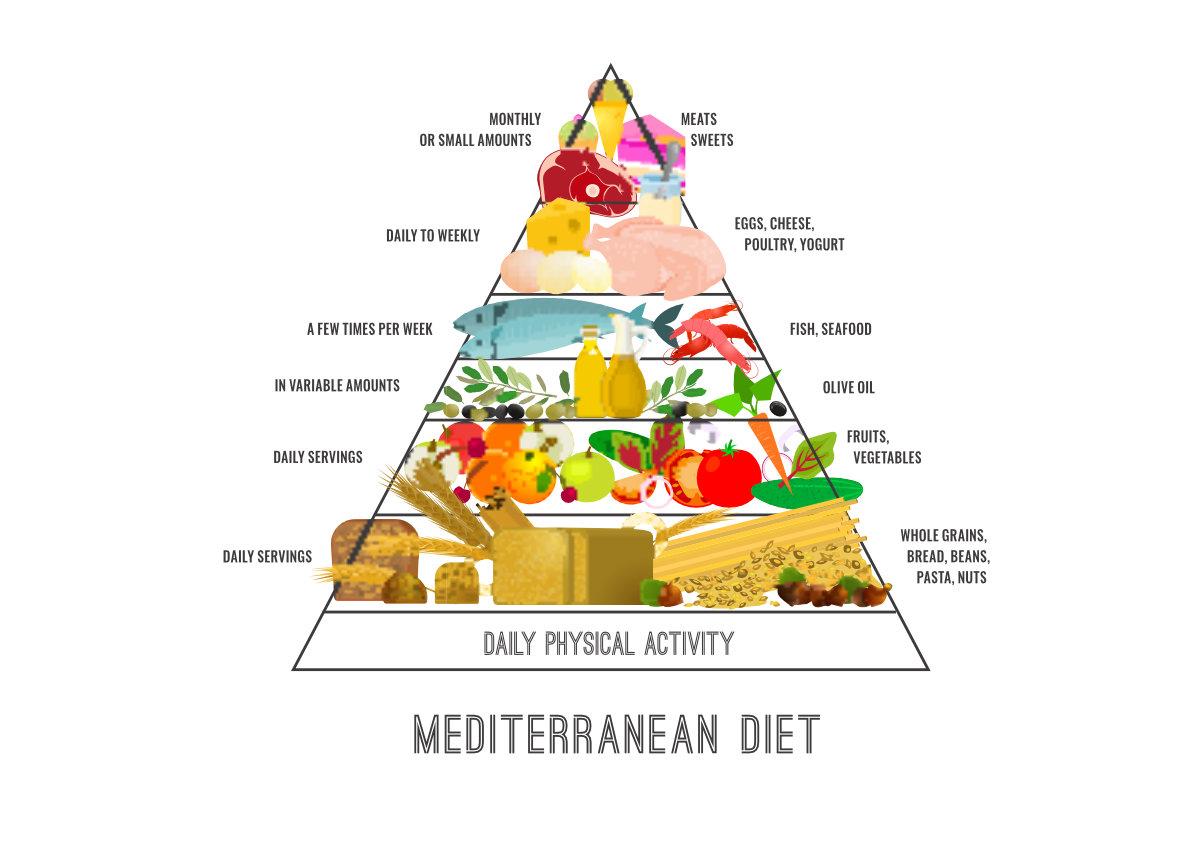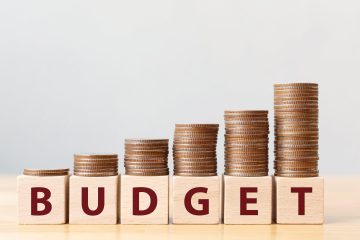Table of Contents
- Understanding the Essentials of a One-Person Food Budget
- Smart Shopping Strategies to Maximize Your Grocery Savings
- Meal Planning Tips for Efficient and Affordable Eating
- Creative Cooking Ideas to Minimize Food Waste
- Nutritional Considerations on a Budget for One
- Q&A
- Concluding Remarks


Understanding the Essentials of a One-Person Food Budget
Creating a food budget for one person can be both an art and a science. It’s essential to identify your dietary preferences and needs while considering your lifestyle and routines. Start by keeping track of your eating habits and expenses for a month. This will help you understand where your money goes and allow you to pinpoint areas for improvement. Tracking apps or a simple spreadsheet can make this process easier and more engaging.
When strategizing your budget, focus on high-impact categories that can optimize your spending while ensuring nutrition. Here are some key components to consider:
- Staples: Invest in versatile items like rice, pasta, and dried beans.
- Proteins: Look for cost-effective options such as eggs, canned tuna, and legumes.
- Fruits and Vegetables: Choose seasonal produce for quality and affordability, and consider frozen options for convenience.
- Snacks: Limit purchases of highly processed snacks; consider homemade alternatives for healthier choices.
Setting a realistic budget is crucial. Consider crafting a simple table to outline your monthly food budget, which can help maintain clarity and focus:
| Category | Monthly Budget |
|---|---|
| Staples | $30 |
| Proteins | $40 |
| Fruits & Vegetables | $50 |
| Snacks | $20 |
| Total | $140 |


Smart Shopping Strategies to Maximize Your Grocery Savings
Maximizing your grocery savings starts with careful planning and strategic decision-making. Create a weekly meal plan that focuses on using ingredients in multiple recipes, ensuring nothing goes to waste. This not only saves money but also simplifies your shopping list. Consider crafting a template where you can easily jot down meals for the week, allowing you to visualize your dietary needs without overspending.
Another effective strategy is to embrace seasonal shopping. Produce prices fluctuate significantly throughout the year, and purchasing seasonal fruits and vegetables can lead to substantial savings. Try to incorporate these seasonal ingredients into your meals. In addition to being cost-effective, seasonal produce is often fresher and more flavorful. Here’s a quick guide to help identify seasonal produce:
| Season | Fruits | Vegetables |
|---|---|---|
| Spring | Strawberries, Cherries | Asparagus, Peas |
| Summer | Watermelon, Peaches | Tomatoes, Zucchini |
| Fall | Apples, Pears | Pumpkins, Carrots |
| Winter | Citrus, Pomegranates | Brussels Sprouts, Root Vegetables |
consider joining grocery store loyalty programs and utilizing digital coupons. Many stores offer discounts to members, and some app-based services allow you to stack coupons on top of sales. Sign up for newsletters or download apps to receive exclusive promotions. It’s an easy way to stay informed about which products are discounted, making it easier to stick to your budget while still enjoying high-quality foods.


Meal Planning Tips for Efficient and Affordable Eating
When it comes to making the most of your food budget, being strategic with meal planning can transform the way you eat. Start by taking inventory of what you already have in your pantry and fridge. This not only helps reduce food waste but also allows you to incorporate existing items into new meals. Once you’ve assessed your current supply, consider planning meals around sales and seasonal produce. When ingredients are in peak season, they are often cheaper and tastier, making your meals even more satisfying.
To make your grocery shopping more efficient, create a detailed shopping list based on your meal plan. Stick to this list to avoid impulse buys that can quickly drain your budget. You might want to categorize your list by sections of the store, like produce, dairy, grains, and proteins. This can help streamline your shopping experience and minimize time spent wandering the aisles. A sample shopping list might look like this:
| Category | Items |
|---|---|
| Produce | Spinach, carrots, bananas |
| Dairy | Eggs, milk, yogurt |
| Grains | Brown rice, oats, whole wheat bread |
| Proteins | Chicken thighs, canned beans, tofu |
Another key tip for effective meal planning is to prepare meals in batches. Set aside a couple of hours on the weekend to cook larger quantities of your favorite dishes. This not only saves time during the busy week, but it also allows you to take advantage of bulk ingredients, which tend to be more cost-effective. Consider freezing individual portions for quick meals on the go, ensuring that you always have nutritious options available when time is tight. Embracing these strategies can lead to more efficient shopping, better meal variety, and significant savings in your overall food spending.


Creative Cooking Ideas to Minimize Food Waste
One of the best ways to make the most out of your groceries is to embrace the concept of root-to-leaf cooking. This involves using every part of the ingredient. For example, while preparing beets, don’t just discard the greens; instead, sauté them with garlic and olive oil for a nutritious side dish. Similarly, carrot tops can be blended into a vibrant pesto. By opting for recipes that utilize all parts of your ingredients, you not only reduce waste but also discover new flavors and textures.
Another strategy is to create a leftover challenge each week. Set aside a specific day for cooking solely with what you have left in your fridge and pantry. This could mean transforming cooked rice into a stir-fry or blending overripe fruits into smoothies. Involve creativity by pairing unexpected flavors; for instance, mixing stale bread with herbs and spices to create croutons or breadcrumbs will give your meals an exciting twist while using what you have. Keep a list of leftover ingredients and revisit them regularly to brainstorm fresh creations.
An efficient way to minimize waste is by meal prepping and freezing surplus foods. Consider the following tips for freezing and storing:
| Food Item | Freezing Tips | Storage Duration |
|---|---|---|
| Fruits | Wash, slice, and spread on a tray before transferring to a bag | 6-12 months |
| Vegetables | Blanch briefly, cool in ice water, then freeze | 8-12 months |
| Cooked Dishes | Cool completely, portion into airtight containers | 2-3 months |
Taking these extra steps helps you extend the life of your groceries, providing both convenience and a reduction in waste.


Nutritional Considerations on a Budget for One
Eating healthy on a budget doesn’t have to be a daunting task. By focusing on whole foods and minimizing processed options, you can create a well-balanced diet that satisfies nutritional needs without breaking the bank. Prioritize purchasing seasonal fruits and vegetables as they tend to be cheaper and more flavorful. Stocking up on staples such as beans, lentils, rice, and oats can provide a nutritious foundation for meals throughout the week.
When planning your meals, consider batch cooking to save both time and money. Prepare large quantities of soups, stews, and casseroles that can be portioned out and frozen for later use. This method allows for a variety of nutrient-dense ingredients while reducing food waste. Incorporate protein sources such as eggs, canned tuna, and tofu, which can be more affordable options compared to fresh meat.
To better manage your food budget, create a simple tracking system. By keeping an eye on your spending and consumption, you can identify trends and adjust your shopping habits accordingly. Use a table to visualize what you’ve spent on basic food categories over the month:
| Food Category | Average Monthly Cost |
|---|---|
| Fruits & Vegetables | $30 |
| Grains & Legumes | $25 |
| Dairy & Alternatives | $20 |
| Proteins | $40 |
don’t underestimate the power of planning. Create a weekly menu that incorporates all the food groups while permitting some flexibility for seasonal availability and promotions. Remember to monitor sales and coupons to further stretch your budget while eating well.
Q&A
Q&A: Mastering the Food Budget for One Person
Q1: How much should I budget for groceries each week? A: A good rule of thumb is to allocate around $40 to $70 per week for groceries, depending on your dietary preferences and location. This can vary significantly based on whether you buy organic products, prepare meals at home, or occasionally dine out. Tracking your spending for a month will give you a clearer idea of your personal budget.Q2: What are some tips for sticking to a food budget? A: Planning is key! Start by creating a meal plan for the week based on what you already have at home, then make a shopping list to avoid impulse buys. Other strategies include buying in bulk, opting for store brands, and utilizing sales and coupons. Consider meal prepping to reduce food waste and save time.Q3: How can I eat healthy on a tight food budget? A: Eating healthy doesn’t have to break the bank! Focus on whole foods like grains, beans, seasonal vegetables, and fruits. Canned or frozen options can be budget-friendly alternatives as well. Try to limit processed foods, which can be more expensive and less nutritious.Q4: What are some inexpensive meal ideas for one person? A: Simple, budget-friendly meals include stir-fries (using seasonal veggies and rice), pasta dishes, or soups. Try a bean and vegetable chili, or a classic omelet packed with ingredients you enjoy. Preparing larger portions and refrigerating leftovers can also help stretch your budget throughout the week.Q5: Are there any resources or apps that can help with budgeting? A: Absolutely! There are several apps like Mint, YNAB (You Need A Budget), and Grocery IQ that can help you track expenses and manage your food budget effectively. Additionally, websites like Budget Bytes offer cheap and healthy recipes specifically designed for those on tight budgets.Q6: How can I minimize food waste while living alone? A: To minimize food waste, plan your meals and buy ingredients that can be used in multiple dishes. Storing leftovers properly in airtight containers can keep them fresh for longer. Embrace ingredients like carrots, potatoes, and grains that have a longer shelf life, and consider composting to recycle food scraps.Q7: Is it worth it to invest in quality kitchen tools for cooking? A: Yes! Investing in a few key kitchen tools—like a good chef’s knife, cutting board, and a sturdy pot—can make cooking simpler and more enjoyable. With the right tools, you can save time and effort, making it easier to stick to your budget and prepare healthy meals at home.With these Q&A insights, mastering your food budget as a solo diner becomes a manageable and even enjoyable pursuit. From strategic shopping to delicious meal ideas, you have the tools to balance your finances and your palate!




0 Comments